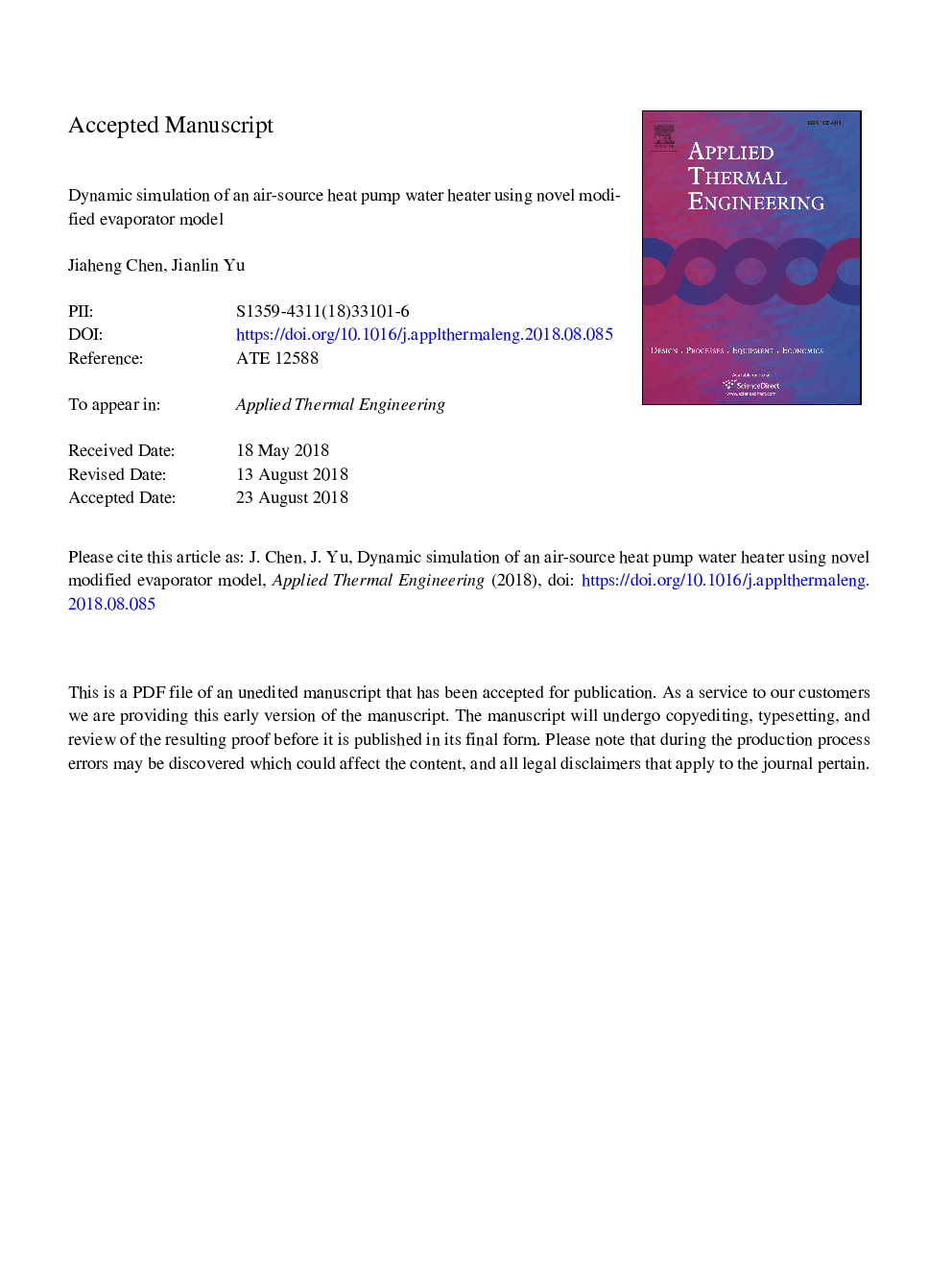| کد مقاله | کد نشریه | سال انتشار | مقاله انگلیسی | نسخه تمام متن |
|---|---|---|---|---|
| 10127269 | 1645050 | 2018 | 34 صفحه PDF | دانلود رایگان |
عنوان انگلیسی مقاله ISI
Dynamic simulation of an air-source heat pump water heater using novel modified evaporator model
ترجمه فارسی عنوان
شبیه سازی دینامیکی آبگرمکن پمپ حرارتی با استفاده از مدل تبخیر شده اصلاح شده
دانلود مقاله + سفارش ترجمه
دانلود مقاله ISI انگلیسی
رایگان برای ایرانیان
کلمات کلیدی
مدل تبخیری اصلاح شده تأیید تجربی، شبیه سازی دینامیک، پمپ حرارتی،
موضوعات مرتبط
مهندسی و علوم پایه
مهندسی شیمی
جریان سیال و فرایندهای انتقال
چکیده انگلیسی
Currently, the common evaporator model based on the moving boundary method ignores the inlet specific enthalpy time derivative, and then yields a mass conservation error in the calculation, which may further reduce the dynamic simulation precision of the evaporator and whole system. To solve this problem, the common evaporator model is modified by introducing an additional input variable, i.e. evaporator inlet specific enthalpy time derivative. The computational results indicate that the modified evaporator model can perfectly eliminate the mass conservation error compared to the common evaporator model. The simulation results based on the common model and the modified model are compared with the experimental data, which reveals that the results from the modified model have better agreement with the experimental data. Under the considered condition, the modified model can reduce the simulation error of average heating capacity from 8.61% to 3.82% compared with the common model. The transient response of the modified model to the step change of the EEV opening degree is also verified with the test. And both the response speeds and numerical values of the evaporating pressure and refrigerant mass flow rate show good agreement. The effects of the evaporator air velocity and the compressor frequency on the system performance are theoretically investigated based on the modified model. The increase of the evaporator air velocity always contributes to the performance improvement of the whole system, but this positive effect become very small when the air velocity exceeds 3â¯m/s. As the compressor frequency increases from 40â¯Hz to 60â¯Hz, the average heating capacity and power consumption increase by 39.62% and 9.79%, respectively.
ناشر
Database: Elsevier - ScienceDirect (ساینس دایرکت)
Journal: Applied Thermal Engineering - Volume 144, 5 November 2018, Pages 469-478
Journal: Applied Thermal Engineering - Volume 144, 5 November 2018, Pages 469-478
نویسندگان
Jiaheng Chen, Jianlin Yu,
